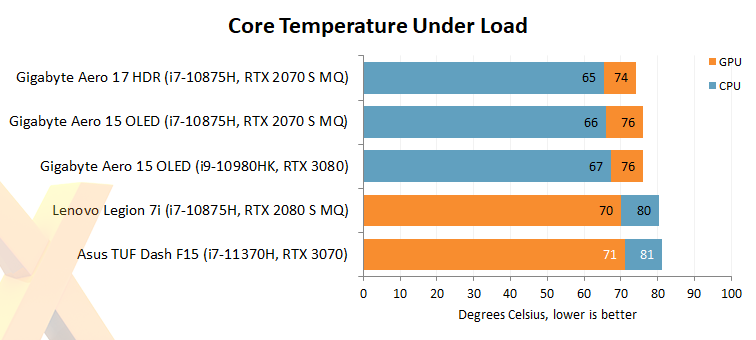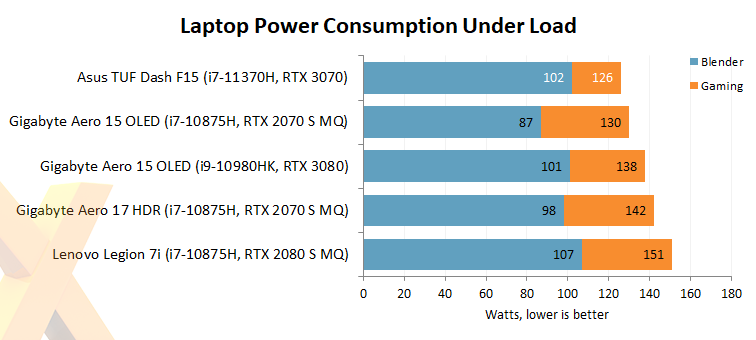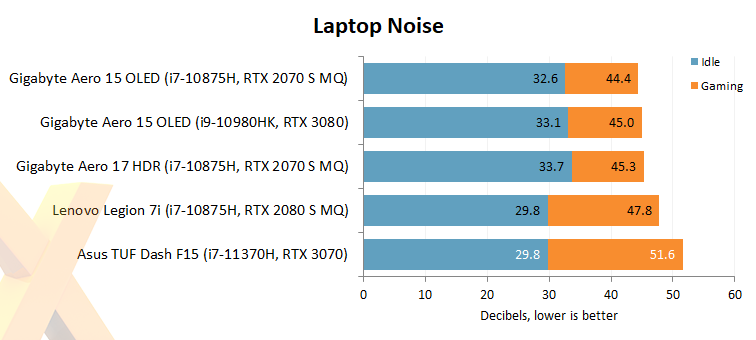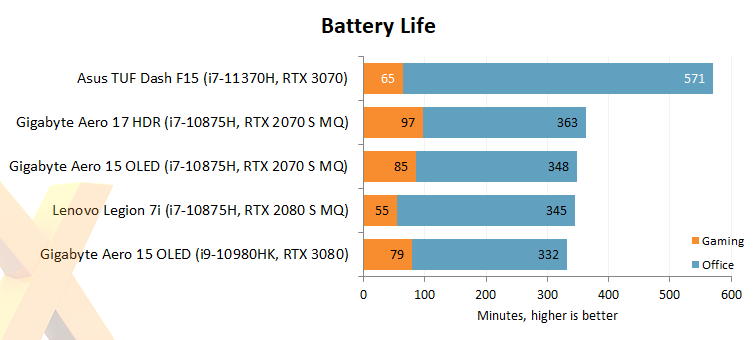Benchmarks: Vitals and Battery Life



Mixed results here. On the one hand, Asus's fans switch off at low load, making the laptop practically silent when idle and wonderfully quiet during everyday tasks, but on the other hand, the fans are over enthusiastic when gaming, resulting in distracting noise levels. Given that the GPU is kept to a reasonably 71° cool there's certainly scope to relax the fan curve.

We use a pair of PCMark 10 benchmarks to gauge battery life; Modern Office, which intermittently uses the writing, web browsing and video conferencing workloads from the main PCMark 10 benchmark; and Gaming, which uses the common Fire Strike test to stress the GPU until the battery is drained.
In order to make the results comparable between laptops, each system is configured with a purpose-built power plan, wireless radios disabled, and screen brightness set as close to 200 nits as possible using a calibration device.
Is there an upside to using a more frugal 35W Core i7 chip? Perhaps, as nearly 10 hours of office use is an admirable return for a gaming laptop, however there are trade-offs to be aware of. Unplug the Dash F15 and the Armory Crate automatically throttles performance while switching the display from 240Hz to 60Hz in order to keep the laptop going all day.


